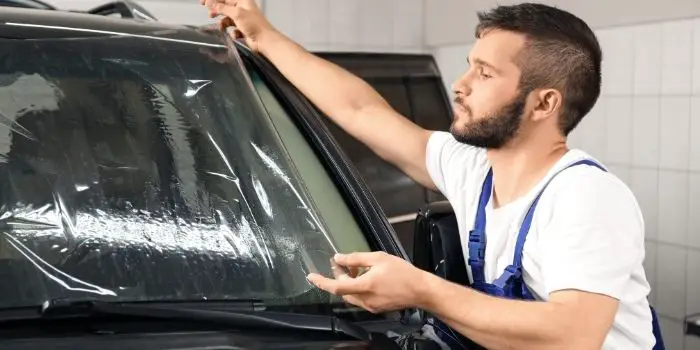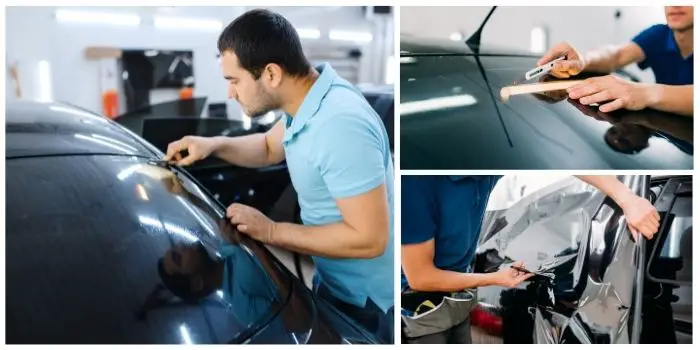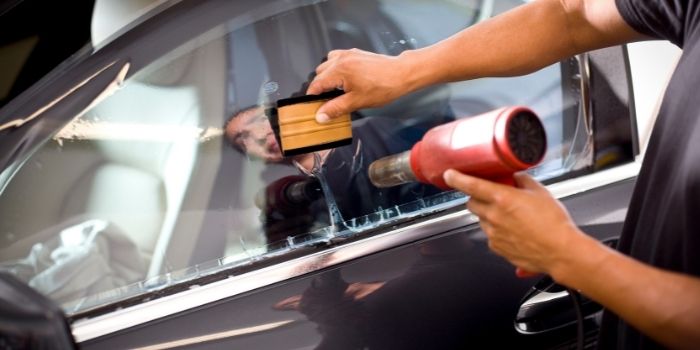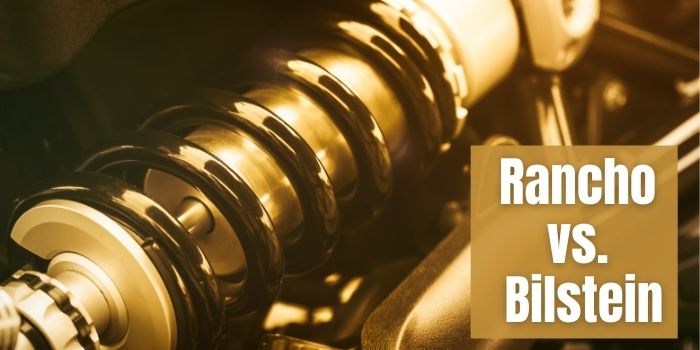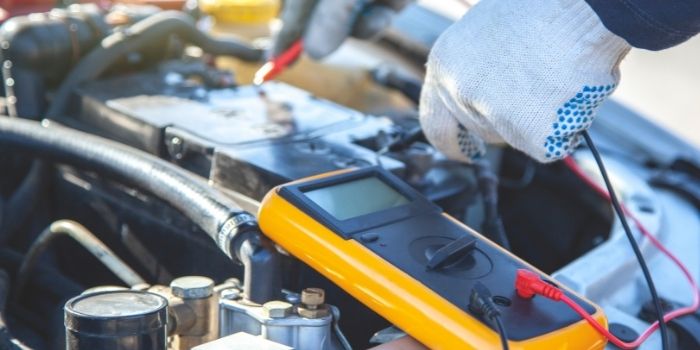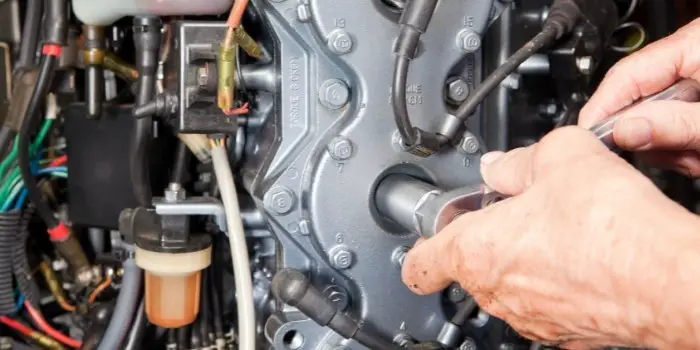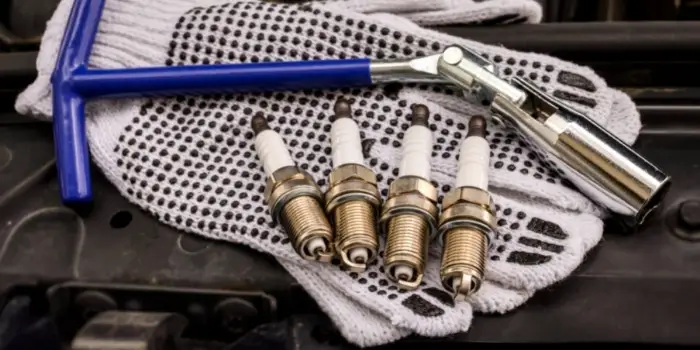Car window tinting is one of the most beneficial enhancements you can make to your vehicle.
Tinted windows have several cosmetic and practical advantages, enhancing the look of your vehicle while also keeping you, your passengers, and your vehicle safe.
Tinted windows not only provide you with a feeling of seclusion, but they also protect you and the inside of your vehicle from sun damage while keeping the vehicle at a lower temperature.
With all of the advantages listed above, adopting tinted windows should be a no-brainer.
The only decision you need to make is the sort of car window tinting you want to put on your vehicle.
There are six types of automobile window tinting, and you can read more about them below.
But first, let’s find out what exactly they are.
Table of Contents
What Exactly is Window Tinting?
It refers to the process of adding a clear layer of window film/window tint to the interior of a vehicle’s windows.
The procedure has grown so prevalent that, depending on the vehicle’s side windows, certain manufacturers now sell models with window tints.
The thickness of window tints and the materials used to make them vary.
Furthermore, the darkness of commercial window tinting is determined by the window tint rules or limits of the individual states.
Different Types of Car Window Tints
Now, let’s look at 6 various types of tints for car windows:
1. Dyed Tint
The entry-level tint in the car industry.
If you want anything that can filter UV radiation, a dyed tint is ideal.
Dyed vehicle window tint offers an impenetrable look, making it an excellent alternative for increasing privacy.
It’s also worth noting that dyed window tinting may fade over time but may be replaced.
It absorbs the sun’s heat and keeps part of it from entering your car due to the usage of dye.
A dyed window tint can be also opaque, making it an excellent alternative for boosting privacy.
Pros
- Affordable
- Privacy
Cons
- It will fade over time
- Damaged easily
2. Metalized Tint
Metalized tints are a step above dye-based tints as they keep heat and UV rays out by reflection.
Metal microparticles are inserted within the layers of metalized tint films to help in UV reflection.
The particles also assist to reinforce your car’s glass, making them less likely to shatter if they break.
Because of the metalized particles, these tints are shinier than dyed tints, and they are significantly more scratch-resistant.
One disadvantage of the embedded metal particles is that they are notorious for interfering with radio, GPS, and cell reception.
This implies that if you are prone to get lost and must depend on Google navigation, you may need to invest in good old-fashioned paper maps.
The price is also much more than for dyed tint; their longevity and strength come at a cost.
Pros
- Efficient UV-ray shielding
- Contribute to shatter resistance
- Scratch-resistant
Cons
- Expensive
- Susceptible to signal interference
3. Hybrid Dyed and Metalized Tint
If you want the best of both mentioned above, the hybrid tint is a fantastic choice.
A grey dye and titanium metallic flakes are often used in this kind of window tint.
It’s neither too reflecting nor too dark, making it ideal for blocking UV rays and decreasing sun exposure indoors, while also providing a mid-level tint film that doesn’t impair night driving.
One significant disadvantage is the high cost of this technology.
You will also experience signal interference as a result of the metal particles.
Pros
- Privacy
- Strength
- Effective UV-ray shielding
Cons
- Expensive
- Interference with signals
4. Carbon Tint
This sort of car window tinting has several benefits over other tint films. It has a distinct matte surface that makes it appealing.
Its carbon content aids in the blocking of acclaimed 40% of infrared radiations which heats the car.
This not only keeps the inside of the car cool but also prevents or delays fading of the upholstery.
This sort of tint film saves energy by minimizing the demand for cooling as well as heating in summer and in winter respectively.
The carbon tint is also long-lasting and will not fade as dyed tints do.
Pros
- Insulating
- Exceptional matte finish
- UV efficiency is high
Cons
- Costly
5. Crystalline Tint
Many individuals desire to tint the windows of their vehicles without darkening them.
If that’s your objective, crystalline window tint is the way to go. It will keep out UV rays and the sun’s heat without being dark.
It almost feels like there is no tint at all.
Pros
- Clear, low-key aesthetic
- Effective UV protection
Cons
- Inadequate privacy
6. Ceramic Tint
These tints are the icing on the cake, the newest and finest.
They are the most costly of the tints discussed here, but they are also the most effective.
Ceramic tints are devoid of dye and metal particles, instead of relying on non-conductive ceramic microparticles.
These particles do not interfere with cell or radio transmissions, but they do efficiently block UV with a claim of 99% decrease.
Ceramic tints outperform all others in terms of glare reduction, strength and shatter resistance, and resistance to scratching.
Despite being newer to the market than the other tints featured here, they have shown themselves and secured their position in the window tints industry.
Its better effectiveness more than compensates for their higher cost.
Pros
- Excellent UV protection
- Amazing glare reduction
- Strong
Cons
- Very costly
All of these window tints come in a variety of colors or levels of darkness. The legality of certain tint percentages will be discussed below.
Window Tint Percentages
When it comes to choosing the best window tinting for your vehicle, you have a wide variety available.
When picking, not only you will need to look at the types, but also at the percentage options.
Vehicle window tint percentage refers to visible light transmission (VLT). It’s basically the amount of visible light that can come through the windows.
Factory tint for most vehicles (when they are manufactured) usually range between 15% and 20%
However, there is a wide range of options available on the market that ranges from 5% to 90%.
The lower the tint percentage you choose, the darker the tint will be.
| 50% Tint | Not for darkness Effective for keeping out heat and UV rays Reduces glare and eye strain to drive safer |
| 35% Tint | Easy to see through Offers darker appearance Creates a smooth, stylish look |
| 20% Tint | Common factory setting Good for privacy and security Can be seen from the inside but difficult from outside |
| 5% Tint | Extremely dark Can’t see through it at all It’s illegal in most states Commonly used on back windows of the limo |
Since not all of these are legal to put on, it’s crucial to understand the window tint laws in your state before installing one.
Each state will have different rules about the maximum percentage that’s allowed for tinted windows on the front-side, back-side, and rear window.
Which Car Window Tints are Legal?
Car window tinting rules in the United States and Canada are determined by the individual state or province.
As a result, there is no unified window tint law that applies to the whole nation.
The American Automobile Association, or AAA, maintains a comprehensive list of window tint restrictions for each US state and Canadian province.
So, make sure you check the rules out before installing any specific tint type in your car.
Keep in mind that the rules may vary according to the vehicle you have (such as car, van, truck, SUV, etc).
So, in case there’s any confusion it’s good to consult a professional before choosing your tint.
This will increase the chances of getting what you exactly desire to have without breaking any laws.
Final Words
As you can see, there is a lot of information to consider while shopping for the finest window tint for your automobile.
The greatest advice we can provide is to always seek the guidance of a competent auto shop near you that provides window tinting services.
They will gladly lay out all of the advantages and drawbacks, explain various window tint benefits and prices, and assist you in making the best option for your budget and requirements.

Based in Orem (Utah) John Paterson graduated from Utah Valley University and has begun writing in 2009. He has a large wealth of experience in writing articles related to cars, automotive repair, wheels, cleaning/maintenance, and much more. He has also written instructional articles in a similar niche for a few online publications as well. Currently, he works as a mechanic in his personal garage shop where he loves serving his countrymen from his heart.

